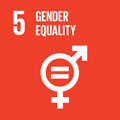- Docente: Gabriele Dorothe Mack
- Credits: 6
- SSD: L-LIN/14
- Language: Italian
- Teaching Mode: In-person learning (entirely or partially)
- Campus: Forli
-
Corso:
Second cycle degree programme (LM) in
Interpreting (cod. 8060)
Also valid for Second cycle degree programme (LM) in Interpreting (cod. 8060)
Second cycle degree programme (LM) in Interpreting (cod. 8060)
Learning outcomes
The student has acquired the basic interpreting techniques (including sight translation, whispered interpreting, note-taking and initial simultaneous) from German into Italian.
Course contents
Consecutive and simultaneous interpreting require concurrent cognitive, linguistic, communicative and interactional processes: listening, understanding, information processing and storing, note taking of discourse (in the consecutive mode) in a source language (SL) that has to be transferred into a target language (TL). This course aims at developing the basic skills and techniques for interpreting between German and Italian, to be refined and perfected during the second year of the course.
In view of the type of activity and teaching methods adopted, attendance of this training activity requires the prior participation of all students in modules 1 and 2 of training on safety in the workplace, in e-learning mode: https://elearning-sicurezza.unibo.it/.
Course contents
- Introduction to simultaneous and consecutive interpreting with notes between German and Italian.
- Developing analytic and synthetic elaboration of spoken discourse.
- Developing knowledge of main text types in conference interpreting.
- Developing communication and public speaking skills, with special attention on precise, fluent and clear expression.
- Developing concentration and memoryin situations involving both listening and speaking; setting of learning objectives and self-assessment.
- Developing critical analysis of intercultural communication situations involving interpreting; professional ethics.
Readings/Bibliography
Kalina, Sylvia (1998) Strategische Prozesse beim Dolmetschen. Tübingen: Narr.
Pöchhacker, Franz (2000) Dolmetschen. Konzeptuelle Grundlagen und deskriptive Untersuchungen. Tübingen: Stauffenburg.
Pöchhacker, Franz (2004) Introducing interpreting studies. London: Routledge.
Setton, Robin & Andrew Dawrant (2016) Conference interpreting – A complete course. Amsterdam: John Benjamins.
Teaching methods
Practical exercises with audio- and videorecording of students' output; theory-oriented discussion of processes and problems; self-, peer and teacher assessment.
N.B.: As concerns the teaching methods of this course unit, all students must attend the online Modules 1, 2 on Health and Safety [https://www.unibo.it/en/services-and-opportunities/health-and-assistance/health-and-safety/online-course-on-health-and-safety-in-study-and-internship-areas].Assessment methods
The course includes continuous assessment of students' progress in learning consecutive and simultaneous interpreting techniques.
The exam aims at checking whether the student has acquired basical interpreting techniques. The exam will consist in consecutive (about 5 minutes) and simultaneous (about 10 minutes) interpreting performances from German into Italian on current affairs and/or social, political and economic topics. The final grade will be an average of the marks obtained by the students in the different parts of this exam.
In order to obtain the highest marks (28 to 30 with honours), the student’s performance must have the following features: complete and accurate rendering of the source language text into the target language: only minor mistakes or distortions can be present in the rendering provided they do not undermine cohesion and the main rhetorical features of the original speech; language and register must be appropriate: the rendering can contain minor grammar or pronunciation mistakes only.
Rendering in consecutive mode must not be longer than the original speech.
In order to obtain 25-27 (good) or 21-24 (fair), the student’s performance must have the following features: there can be omissions or inaccuracies provided they are not serious; there can be mistakes or distortions provided they do not cause a complete loss of cohesion and of the main rhetorical features of the original speech; there can be some inaccuracies in register and language the rendering can contain minor grammar, syntax or pronunciation mistakes.
Rendering in consecutive mode may not excede the original speech by more than 10%.
In order to obtain a pass (18 to 20) the student’s performance must have the following features: the rendering may contain omissions and distortions but overall it should convey the content of the original speech; language and register may show inaccuracies but should not undermine the comprehension of the rendering: there can be grammar, syntax and pronunciation mistakes.
Rendering in consecutive mode may not excede the original speech by more than 15%.
Teaching tools
Teaching tools include: paper or electronic documents, authentic speeches, audio and video recordings of speeches from authentic communication situations, audio and videotapings of student output, paper and electronic dictionaries, bi- and multi-lingual glossaries; interpreting during mock or real conferences organised by DIT (such as Permanent Lab on Interpreting), use of e-learning platform and electronic tools for documentation and terminology management.
Office hours
See the website of Gabriele Dorothe Mack
SDGs



This teaching activity contributes to the achievement of the Sustainable Development Goals of the UN 2030 Agenda.
